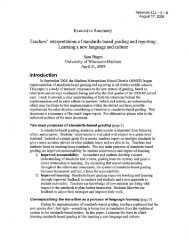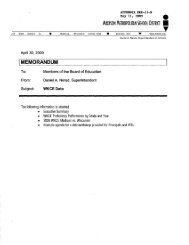Madison Preparatory Academy - School Information System
Madison Preparatory Academy - School Information System
Madison Preparatory Academy - School Information System
Create successful ePaper yourself
Turn your PDF publications into a flip-book with our unique Google optimized e-Paper software.
well. Of those who were unemployed, eight were not working because of injury or illness: 7 because they had<br />
young children and one who was laid off. The report goes on to summarize that “the picture that emerges from<br />
this data is one of a predominantly blue collar group in which the unemployment rate is not high.” Still, a high<br />
percentage of respondents who said they would like to change their job (66%) “revealed [to the researcher] that<br />
[the respondents] are not satisfied with their present jobs” and “76% said they would be interested in learning<br />
about job training opportunities.” 7 The differences in these reports, and the private comments that African<br />
Americans shared with the researcher about how they really felt, were attributed largely to fear of causing trouble<br />
or being marginalized in <strong>Madison</strong> for speaking out.<br />
During the 1970s, as affirmative action took root on college campuses across the United States, the University of<br />
Wisconsin-<strong>Madison</strong> saw a surge in enrollment and college completion among African American students. It was<br />
during this period and into the early 80s where this new group of college educated African Americans began to<br />
give greater voice to the voiceless and significantly increased advocacy for social change and equal opportunity<br />
among <strong>Madison</strong>’s Black community. Individuals such as Betty Latimer, Kwame Salter, Dr. John Odom, Betty<br />
Franklin (Hammonds), Reverends James C. Wright, Betty Banks, Eugene Parks, Dr. Richard Harris, Anthony<br />
Brown, Joseph Thomas, Nelson and Marlene Cummings, Will Smith, Henry and Theresa Sanders and a young Ed<br />
Holmes, to name a few, began to join forces with elder leaders in the African American community to speak out<br />
publicly and advocate for the concerns of African Americans through the church, NAACP, Urban League and<br />
other groups and associations. Unfortunately, African Americans’ progress in college enrollment and community<br />
advocacy was stymied by dramatic economic changes and backlash against affirmative action policies and<br />
practices at that time.<br />
The economic recessions of the 70s and 80s combined with the dramatic displacement of unskilled, manual labor<br />
jobs with employment opportunities that required more specialized skills and professional education and the<br />
outsourcing of jobs to other countries, left many under-skilled, under-trained, and under-educated African<br />
Americans out of work and out of the labor force.<br />
In 1988, ULGM published the Report on the Academic Achievement of Black Students (1987-88), which<br />
“conclusively proved that there was an education gap” between African American and White students enrolled in<br />
the <strong>Madison</strong> Metropolitan <strong>School</strong> District (MMSD). Through the Urban League’s advocacy, as well as other<br />
community members’ efforts, MMSD created the Equity & Diversity office, helped establish parent-school<br />
liaisons in <strong>Madison</strong> elementary schools and launched a tutoring program. 8 Additionally, the Urban League, along<br />
with the local NAACP and other groups, requested that MMSD seek to recruit and employ more teachers of color<br />
and re-establish a middle school on <strong>Madison</strong>’s South Side. This advocacy led to the creation of Wright Middle<br />
<strong>School</strong>, which was supposed to be a high tech school that prepared its mostly young people of color with high<br />
tech skills to be leaders in a high tech future. It also led to the establishment of MMSD’s Grow Your Own<br />
program, which identified paraprofessionals and teachers of color who were interested in becoming teachers and<br />
principals, and provided them with tuition support to help them secure education and credentials to be teachers<br />
and leaders in <strong>Madison</strong>’s public schools. Both programs realized some success but no longer exist or have the<br />
same mission.<br />
In 1994, the Wisconsin Policy Research Institute (WPRI) conducted a much deeper review of MMSD policies and<br />
practices as it pertained to supporting and educating students of color. This report, “Dual Education in the<br />
<strong>Madison</strong> Metropolitan <strong>School</strong> District,” set off new alarm bells among <strong>Madison</strong>’s African American and civil<br />
rights communities. The business community took notice as well. The President of WPRI wrote in his forward to<br />
the study:<br />
What is surprising in this report is the lack of achievement among minority students. The<br />
perception of the <strong>Madison</strong> school district in Wisconsin and around the country is that it is one of<br />
the top urban districts…it is perplexing to find that Black students are doing as poorly [in<br />
<strong>Madison</strong>] as they are in Milwaukee and Racine….It appears as though there is some sort of dual<br />
system in the <strong>Madison</strong> schools. If you are middle-class White, you can apparently get a good<br />
education. However, if you are Black, that is not going to happen. <strong>Madison</strong> also seems to be<br />
following a trend found in other large urban districts around the country, where Black students<br />
10 | P age


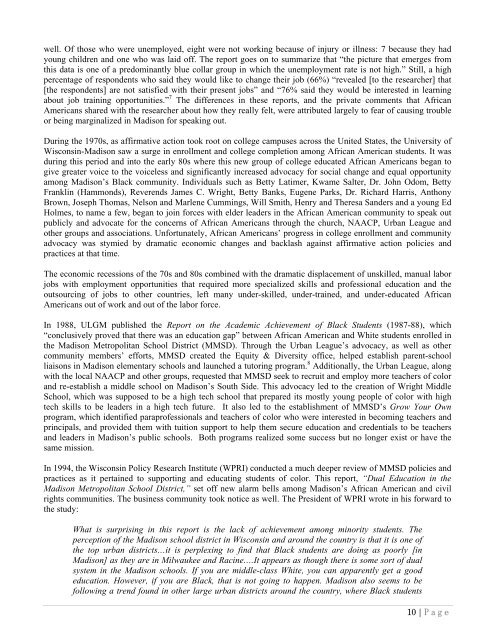
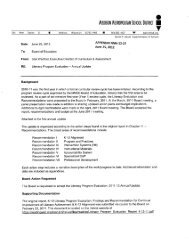

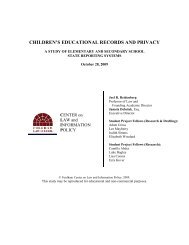

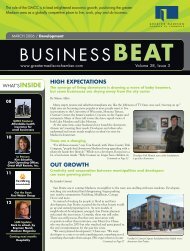
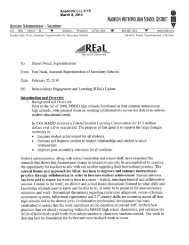
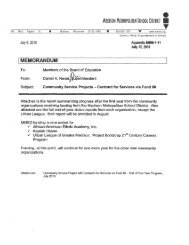
![by Shaina Wright [PDF] Ralph Waldo Emerson Prize 2006 - School ...](https://img.yumpu.com/26083584/1/174x260/by-shaina-wright-pdf-ralph-waldo-emerson-prize-2006-school-.jpg?quality=85)
